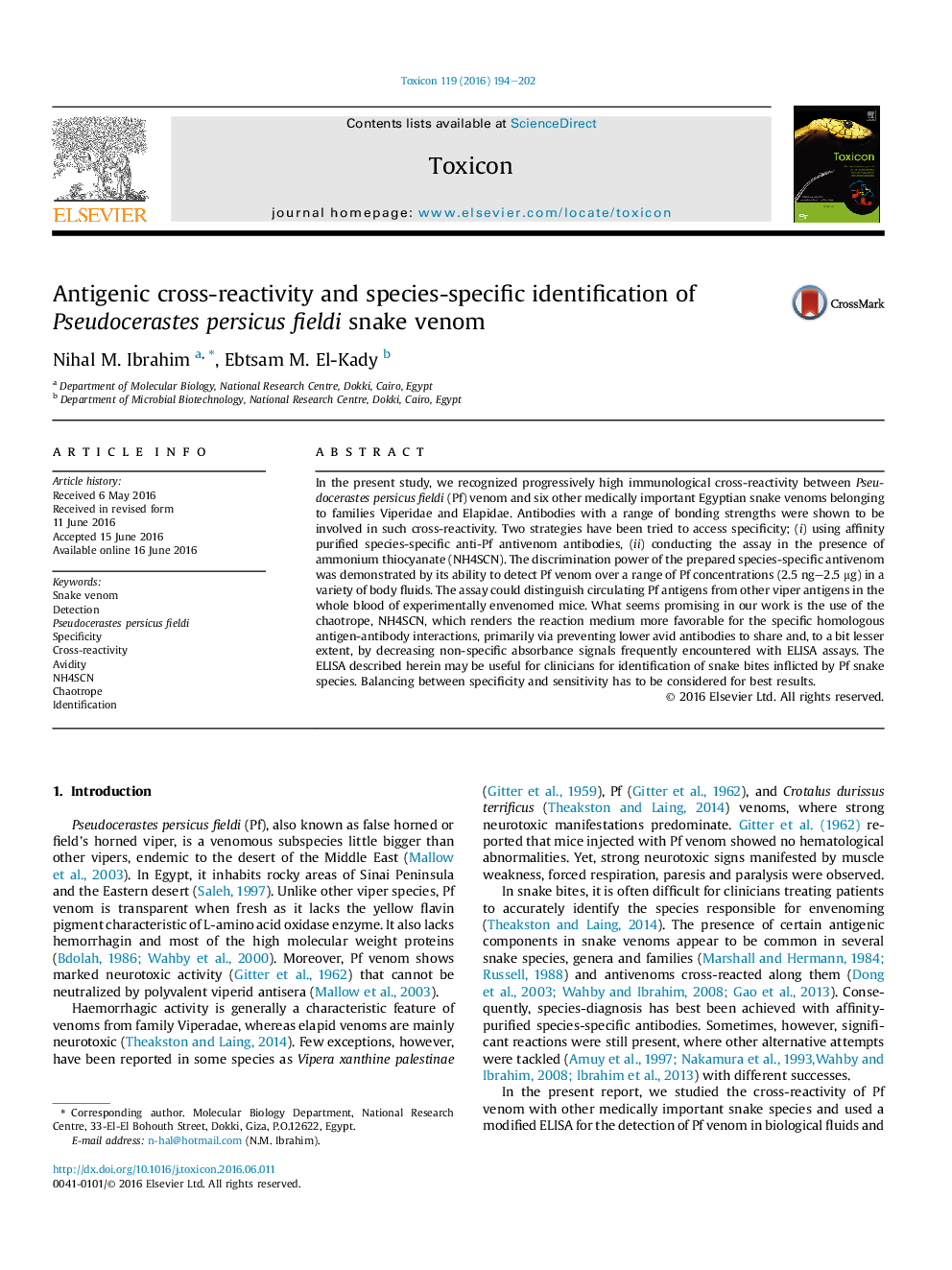| Article ID | Journal | Published Year | Pages | File Type |
|---|---|---|---|---|
| 2064008 | Toxicon | 2016 | 9 Pages |
•We recognized extensive cross-reactivity between Pseudocerastes persicus fieldi venom and other species.•Species-specific antibodies in presence of NH4SCN were used to access specificity.•NH4SCN creates more specific reaction medium for species diagnosis.•Our ELISA is able to selectively detect P. p. fieldi venom in several biological fluids.
In the present study, we recognized progressively high immunological cross-reactivity between Pseudocerastes persicus fieldi (Pf) venom and six other medically important Egyptian snake venoms belonging to families Viperidae and Elapidae. Antibodies with a range of bonding strengths were shown to be involved in such cross-reactivity. Two strategies have been tried to access specificity; (i) using affinity purified species-specific anti-Pf antivenom antibodies, (ii) conducting the assay in the presence of ammonium thiocyanate (NH4SCN). The discrimination power of the prepared species-specific antivenom was demonstrated by its ability to detect Pf venom over a range of Pf concentrations (2.5 ng–2.5 μg) in a variety of body fluids. The assay could distinguish circulating Pf antigens from other viper antigens in the whole blood of experimentally envenomed mice. What seems promising in our work is the use of the chaotrope, NH4SCN, which renders the reaction medium more favorable for the specific homologous antigen-antibody interactions, primarily via preventing lower avid antibodies to share and, to a bit lesser extent, by decreasing non-specific absorbance signals frequently encountered with ELISA assays. The ELISA described herein may be useful for clinicians for identification of snake bites inflicted by Pf snake species. Balancing between specificity and sensitivity has to be considered for best results.
